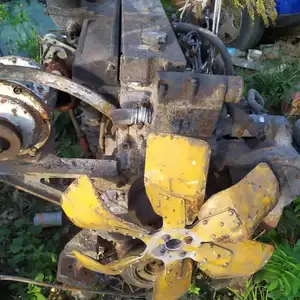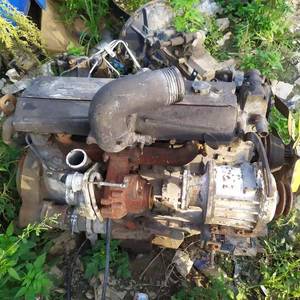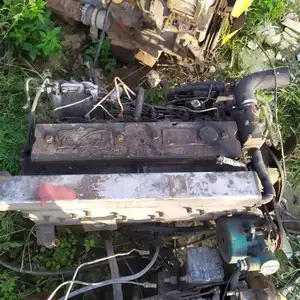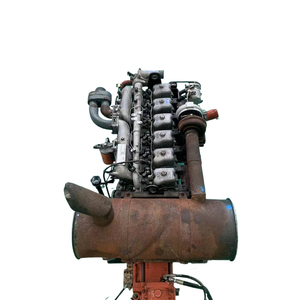(5760 products available)






















































































































































































A 6-cyl engine is a popular choice among buyers. It is known for its powerful performance and smooth operation. The engine comes in several variations, each with a unique set of features.
1. V6 Engine
The V6 engine is the most popular version of the 6-cylinder engine. The cylinders are arranged in two rows of three in a V shape. The compact size of the V6 makes it a great option for both large and small vehicles. The V6 engine also provides a balance between power and fuel efficiency. Many automakers use the V6 engine as a standard option or as an upgrade from the inline-six engine. Car models with the V6 engine include Ford Mustang, Honda Accord, and Chevrolet Traverse.
2. Inline 6 Engine
The inline 6 engine has six cylinders arranged in a single row. This engine design is known for its smooth power delivery. The inline-six engine is larger than the V6 engine. For this reason, the engine is mostly found in mid-size and large vehicles. The inline-six engine was the most common 6-cyl engine design before the V6 engine became popular. Today, the inline-six engine is mostly used in sports cars and performance vehicles. For example, Toyota GR Supra and BMW Z4 have inline-six engines. Some modern versions of the inline-six engine come with turbochargers to improve fuel efficiency and performance.
3. Flat-six Engine
In a flat-six engine, the six cylinders are arranged in two horizontal rows of three. This design is also called a boxer engine. Flat-six engines are compact and low to the ground. This helps to lower the center of gravity of the vehicle. A flat-six engine is mainly used in small sports cars and high-performance vehicles. For example, Porsche 911 and Subaru BRZ come with a flat-six engine. The flat-six engine has a complex design compared to the V6 and inline-six engines. As a result, the flat-six engine is usually more expensive.
Specifications and requirements for maintaining 6-cyl engines are provided below.
Regular oil changes
The oil and oil filter should be changed every 5,000 miles or as recommended in the owner's manual. Fresh oil keeps everything lubricated and running smoothly
Air filter replacement
Check the air filter every 15,000 miles. A clean air filter helps fuel burn properly for good power and efficiency
Tire care
Rotating tires is done every 5,000 to 7,500 miles. This helps them wear evenly. Keep tires properly inflated and check them monthly
Brake system inspection
Brake pads and rotors are inspected at 30,000 miles. Brake fluid should be flushed and refilled every 2 to 3 years
Cooling system service
The coolant should be changed according to the schedule in the owner's manual. Hoses and the thermostat are checked for leaks or cracks
Spark plug replacement
Spark plugs are replaced around 60,000 miles. Wires and coils are also inspected. Good spark plugs are needed for proper engine firing
Fuel system cleaning
A professional fuel system cleaning is done at 30,000 miles or as needed. This removes deposits from the injectors and intake
Chassis lubrication
Joints and linkages are greased per the schedule in the owner's manual. The timing belt or chain is checked and replaced if needed
Regular engine checks
The oil level and condition are checked each month. Topped up if low. The cooling system is inspected for leaks, and levels are verified
Before sourcing, it is important to know the target audience and their preferences. The following are some factors to consider when choosing a 6-cyl engine for resale:
Type of 6-cyl engine
Consider sourcing either the V6 or inline 6 engine. The V6 engines are more popular because they are compact and powerful. They are mostly used in sports and luxury vehicles. On the other hand, the inline 6 engines are smoother and quieter. They are mostly used in high-performance cars. The target audience will determine the type of engine to source.
Performance
Another important factor to consider is the performance of the 6-cyl engine. The engines have different horsepower and torque ratings. It is important to choose engines with high horsepower and torque for better performance. Some audiences might prefer engines with lower horsepower because they are cheaper.
Fuel type
Most 6-cyl engines use gasoline, but some use diesel. The diesel 6-cylinder engines are more fuel efficient than the gasoline engines. They also provide more torque, making them ideal for heavy-duty vehicles. Choose the fuel type that will suit the target audience.
Emissions
6-cyl engines emit harmful greenhouse gases. However, some engines have emission control systems that reduce emissions. These engines are ideal for people who want to protect the environment.
Cost
6-cyl engines have different price points depending on the type, performance, and fuel type. It is important to set a budget and choose an engine that is within the price range. Don't forget to consider the maintenance and repair costs of the engine.
Replacing a 6-cylinder engine is a complex task that requires proper mechanical knowledge, experience, and the right tools. Before replacing an engine, it's necessary to read the service manual and get detailed information about the engine's components. Below are some general steps to help make the process easier:
Q1: What is a 6-cyl engine?
A1: A 6-cyl engine is simply an engine with six cylinders. This engine is also known as a V6 engine. The six cylinders in the V6 engine generate power that moves the vehicle.
Q2: What is the most common vehicle with a 6-cyl engine?
A2: The most common vehicle with a 6-cyl engine is the V6-powered pickup truck. Other common vehicles with a 6-cyl engine are sports cars and luxury vehicles.
Q3: What are the benefits of a 6-cyl engines over 4-cyl engines?
A3: Compared to the 4-cyl engine, the 6-cyl engine generates more power. This makes it suitable for driving large and heavy vehicles, such as trucks and SUVs. The 6-cyl engine also runs smoother than the 4-cyl engine.